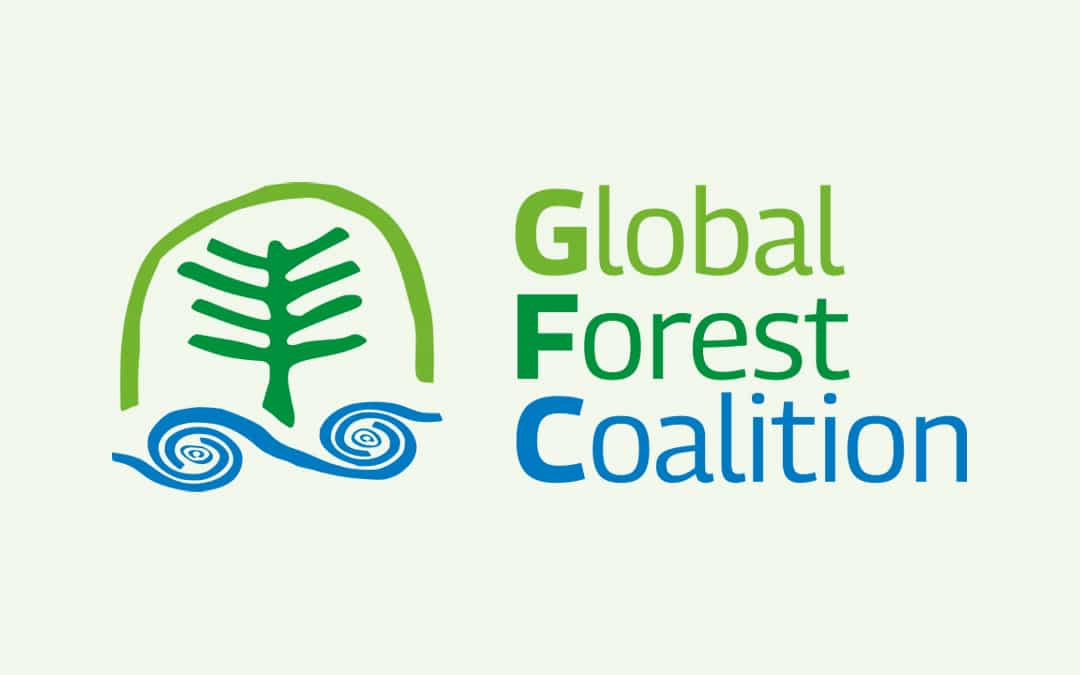While the spectacular conference centre where the current climate talks are held looks rather unworldly, it is important to look at the realities behind these negotiations. In Paraguay, for example, the main cause of greenhouse gas emissions is deforestation. The main driver of forest loss is agriculture and the main underlying cause is meat, meat and more meat, as deforestation is mainly caused by cattle ranching and by the production of soy as fodder for European and Chinese livestock. This deforestation is having devastating impacts on Indigneous peoples, peasants, women and men.
So can UNFCCC help? The UNFCCC response to this drama is called REDD+ (reducing emissions from deforestation and forest degradation and enhancing forest stock). REDD+ is supposed to pay countries for their efforts to reduce forest loss and Paraguay already received some 4 million US dollars for a so-called readiness program. But in reality we see that more than half of that money is spent on the development of very complicated and expensive systems to monitor forests – so-called Monitoring, Verification and Reporting (MRV) systems. We also see that deforestation levels are higher than ever, that the participation of Indigenous peoples in the elaboration of the program is artificial and the participation of civil society non-existent. So there is a big gap between that reality on the ground and the REDD pep-talk on safeguards and Indigenous peoples’ participation that is often heard here at the conference.
Here in Doha, we are confronted with an ever-strong push to include forests, and possibly agriculture and other land-based activities, into future carbon markets. This is very worrying. The voluntary forest carbon offset projects that have been implemented in Paraguay until now have been a scam. They are verified as sustainable by the Carbon, Communities and Biodiversity Alliance, but Indigenous Peoples that participate in the scheme have been cheated, land tenure issues have not been addressed, and there is massive leakage, that is, deforestation has simply been displaced from the project site to other sites. Indigenous Peoples and women suffer most from such impacts of carbon markets: as they find themselves in an economically and politically marginalized position, they are easily cheated into false forest carbon offset contracts.
Yet there is a lot of interest amongst developing countries, especially the Coalition of Rainforest Nations (which is a coalition of Papua New Guinea (PNG) and a large number of countries that lack capacity to develop their own REDD position at the climate talks – and that often openly disagree with PNG by the time they wake up during the negotiations). This is because a few years ago many scholars and other writers repeated the fairy tale that including REDD+ in carbon offset markets would generate 30 billion USD per year for forest conservation in tropical rainforest countries.
A little over ten years ago, forest conservation was excluded from the Clean Development Mechanism, the main global carbon market, and for very good reasons. There were unsurmountable problems with permanence (that is, the fact that trees will never store carbon permanently), additionally and reference levels (simply said, the problem that one cannot predict what would have happened to a certain forest in the absence of a conservation project). These problems have not been resolved. The texts that are currently on the table to deal with these issues are totally weak and artificial, and leave it up to countries themselves to address these issues in the way they feel suitable. As a result, inclusion of forests and other land-based activities in ‘new’ carbon markets will likely become the biggest loophole in the entire climate regime, making any emission targets now, in 2015 or in 2020, more or less meaningless.
Moreover, as a source of financial support for mitigation activities carbon markets have proven to be totally unreliable, unstable, and unpredictable. In the case of REDD+, more than 90% of all funding is public, and everybody now admits that at least until 2020, the main source of finance will remain to be public. However, for austerity reasons, donors are trying to cut this support. Here in Doha, the EU launched a remarkable proposal (called the ‘incentive level’) not to give any REDD+ money anymore to countries that are seen as having ‘money enough’ to conserve their own forests. This would include most middle-income countries, that is, almost all of Latin America, where deforestation is still rampant. But they still try to impose very complicated MRV systems on these countries, as they want to make sure whatever is generated in REDD+ actions is suitable for an international offset market. In fact, there is a suspicion that they might be proposing to exclude Brazil from public REDD+ funding because it is the main country, together with Bolivia, that has persistently opposed carbon offset finance.
In return, developing countries are making a fuss about these strict MRV requirements, and they are right. They are also right that they insisted so often on the need for adequate and predictable support that the text ended up twice in the same sentence in one of the draft negotiation texts. (In general, it was obvious from the quality of the negotiation texts related to REDD until now that Parties should be prohibited to meet until 5 am in the morning.)
What is clear, however, is that the Northern countries and their allies in the Coalition for Rainforest Nations, are trying to push for a purely carbon-oriented ready-made MRV agreement to make forest carbon marketable. All matters that could complicate such an agreement, like safeguard information systems and information on non-carbon values, are being postponed to future negotiations. In Durban, countries agreed REDD+ finance ‘could’ come from markets, but now they are pushing it further; The text on REDD+ finance (which is negotiated in another process than the MRV text) talks about the “demand for carbon” being a condition for “scaled-up finance”, which is code language for markets. At this moment, there is no explicit reference to carbon markets in this text, but the market-promoters do not need such text, as the real negotiations on new market mechanisms take place in a parallel process. The only thing they want to ensure is that REDD+ is ready to be included as soon as such a market mechanism is ready – and an agreement on carbon monitoring systems according to the ‘normal’ MRV system is crucial for that.
In conclusion, the case of REDD shows how MRV is used as a trojan horse to force developing countries to accept forest carbon markets, even though they will totally undermine the Climate Convention and even though they have proven to be an unreliable, unpredictable and inadequate source of finance.
Lastly, some positive news: Bolivia launched an alternative, non-market based approach to REDD in 2012, and it is fighting hard as there is at least a clear reference to this proposal in the text. The proposal emphasizes the role of forests in mitigation and adaptation. It is very much hoped that an increasing number of donors will realize this is a much more sensible approach to forests, also to fully take into account all the benefits of forests, and all the rights and needs of Indigenous Peoples and women related to REDD+.
Simone Lovera – Global Forest Coalition
www.globalforestcoalition.org




